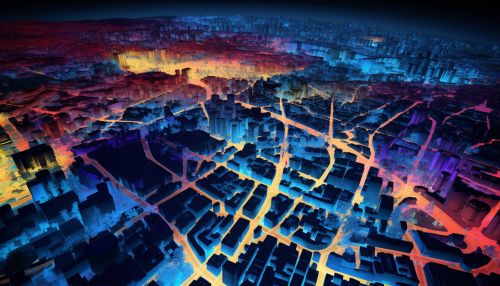Environmental planning
Introduction
Environmental planning is a multidisciplinary field that combines aspects of urban planning, environmental science, and public policy to improve the overall quality of the natural and built environment. It involves comprehensive analysis and forecasting of environmental conditions, with the aim of managing and mitigating the impacts of human activities on the environment[1].


History of Environmental Planning
The concept of environmental planning as a distinct discipline emerged in the late 20th century, in response to growing public concern about environmental degradation and the need for sustainable development[2]. Early environmental planning efforts focused on preserving natural resources and minimizing the environmental impacts of industrialization.
Principles of Environmental Planning
Environmental planning is guided by several key principles, including sustainable development, ecosystem services, and environmental justice. These principles inform the development of environmental plans and policies, and guide the decision-making process in environmental planning[3].


Environmental Planning Process
The environmental planning process typically involves several stages, including problem identification, data collection and analysis, plan formulation, plan implementation, and monitoring and evaluation[4]. Each stage requires specialized knowledge and skills, and involves a range of stakeholders, including planners, scientists, policymakers, and community members.
Tools and Techniques in Environmental Planning
Environmental planners use a variety of tools and techniques to analyze environmental conditions and forecast future scenarios. These include Geographic Information Systems (GIS), Environmental Impact Assessments (EIA), and Strategic Environmental Assessments (SEA), among others[5].


Challenges in Environmental Planning
Despite its potential benefits, environmental planning faces several challenges, including data limitations, conflicting stakeholder interests, and the inherent uncertainty of environmental systems[6]. Addressing these challenges requires innovative approaches and continuous learning and adaptation.
Future of Environmental Planning
The future of environmental planning lies in its ability to adapt to changing environmental conditions and societal needs. This includes embracing new technologies, such as remote sensing and artificial intelligence, and integrating principles of climate change adaptation and resilience into planning practices[7].


See Also
References
- ↑ Clark, R. N., & Stankey, G. H. (1979). The Recreation Opportunity Spectrum: A Framework for Planning, Management, and Research. General Technical Report, PNW-98. USDA Forest Service, Pacific Northwest Forest and Range Experiment Station, Portland, OR.
- ↑ Beatley, T. (1995). Planning and Sustainability: The Elements of a New (Improved?) Paradigm. Journal of Planning Literature, 9(4), 383–395.
- ↑ Godschalk, D. R., & Anderson, W. (2012). Sustaining Places: The Role of the Comprehensive Plan. Journal of the American Planning Association, 78(4), 389–403.
- ↑ McHarg, I. L. (1969). Design with Nature. Natural History Press.
- ↑ Therivel, R., & Partidário, M. R. (1996). The Practice of Strategic Environmental Assessment. Earthscan.
- ↑ Healey, P. (1997). Collaborative Planning: Shaping Places in Fragmented Societies. UBC Press.
- ↑ Wheeler, S. M., & Beatley, T. (2014). The Sustainable Urban Development Reader. Routledge.
